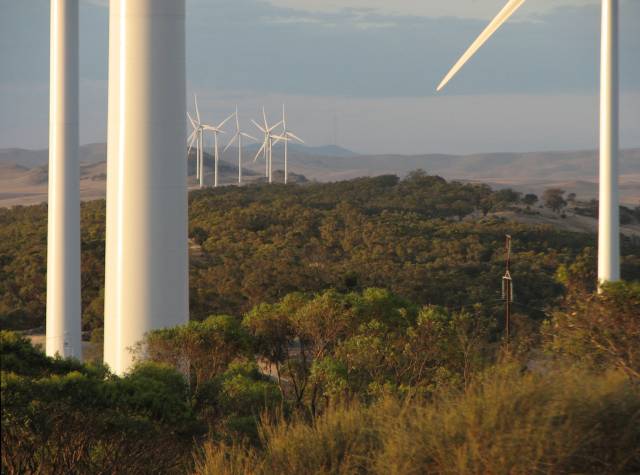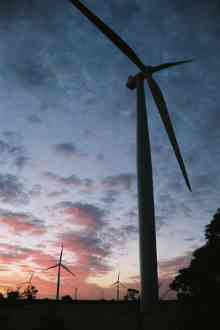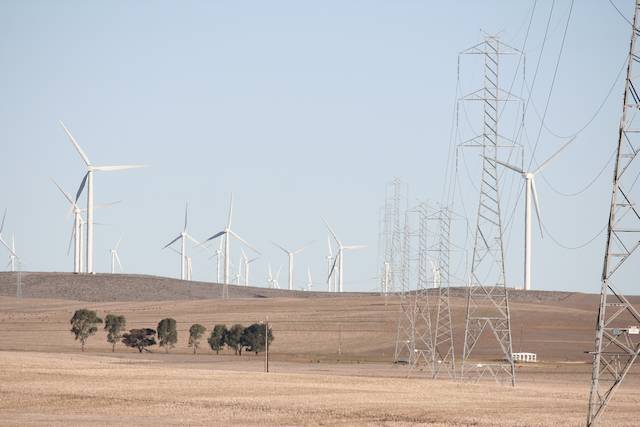|
Introduction
National Wind Watch and the rest of the anti-wind power lobby are motivated by selfishness; they don't want wind turbines near them (NIMBY), they don't much care about what climate change and ocean acidification will do to the planet if we fail to adopt renewable energy and the millions of people killed each year by air pollution from the burning of fossil fuels doesn't bother them.Most of the links in the text below lead to more information on the subject under discussion.
Environmentalists have long urged people to "think globally, act locally"; anti-windpower groups such as Wind-Watch change this to "think deviously, act selfishly".
An example of a ridiculous claim published by National Wind Watch.
"Homeopathist driven from home by wind turbines 35km away"
Wind Watch published a piece by George Papadopolous on
wind turbines and low frequency
noise.
In his piece Mr Papadopolous almost entirely ignores sound intensity
(not to mention common sense); this
allows him to claim that noise problems due to wind turbines can persist as
much as 35 or even 70km from wind turbines.
I have visited many Australian wind farms on many occasions.
The greatest distance from which I have ever heard wind turbines is 2.5km
(correction, on 2013/07/07 I
managed to just hear
some turbines 3.0km away),
and then only in near ideal conditions; I noticed at the time that if a car
was travelling within 2km of me the noise it made drowned out that of the
turbines.
Homoeopathic strength wind turbine sound
|
But perhaps we should not be surprised that Mr Papadopolous believes this, he is apparently a believer in homoeopathy. In mainstream medicine there is a principle called the 'dose-response-relationship', in which the severity of the response to a poison or an exposure to a harmful radiation varies with the dose. Perhaps those who believe homoeopathic claptrap and the writers of Wind Watch do not accept this? Perhaps they believe that the air carries a 'memory' of a wind turbine that it passed by, just as homoeopaths believe that water carries a memory of substances it has been mixed with.
The fact that Wind Watch is willing to publish such arrant nonsense as that written by Mr Papadopolous shows how low are their standards for reasonableness.
Wind turbines save lives, but the people of Wind Watch choose to ignore this. There have been around 20 reviews of the research literature; not one of these concluded that wind turbines cause any illnesses. On the other hand, it has long been known that the emissions from fossil fuel power stations cause numerous serious illnesses and deaths. The electricity generated by wind turbines mean that less electricity need be generated by burning fossil fuels. The top medical journal, The Lancet, quantified the deaths and serious illnesses caused by burning fossil fuels in power stations.
But let's look a bit more closely at the factual content of Wind Watch.
|
|
Some of the lies in Wind Watch
|
In fact:
- Wind farms are not a threat to wildlife.
For example, the British Royal Society for the Protection of Birds is so
convinced that wind power will be good for birds that they have
built a wind turbine at their headquarters.
The prominent US bird protection group, Audubon, recognise that climate
change poses a far higher threat to birds that do wind turbines.
Australia's Conservation Foundation (ACF) is supportive of wind power too.
- Wind power is very environmentally friendly. Negligible emissions are produced during operation, very little water is consumed, very little land is taken out of production, the energy used to construct a wind farm is paid back in about six months of operation, what little remnant native vegetation is damaged is replaced, and few birds are killed by turbines.
The second sentence of the home page includes more lies about wind power: regarding carbon emissions and the dependence on 'other fuels'.
In fact:
|
- Wind power does
significantly
reduce carbon emissions.
This is so obviously true that no person having any intelligence or knowledge
of the power system would deny it.
Electricity has to be consumed at the same rate as it is being generated.
If wind-generated electricity is fed into the grid, some other electricity
generation must be lessened; this almost always is fossil-fuel
generated electricity.
The graph on the right shows emissions intensity (EI) from the four large states in the Australian National Electricity Market (NEM) and the average for the whole of the NEM, including Tasmania. Tasmania's EI is off-scale at the bottom of this graph. Note the very large decline in South Australia's EI, due almost entirely to the introduction of wind power.
- Wind power does reduce dependence on other fuels. For example, in 2007 South Australia only had 0.6% wind power, all the remainder was generated by fossil fuel-fired power stations. By 2022 SA had 68% renewable energy, two thirds of that being wind power, one third solar. Most of the remainder was gas-fired. The last coal-fired power station in South Australia was shut down in May 2016. It was unable to continue because it was economically uncompetitive.
|
|
- Wind power is efficient.
The state of South Australia had near zero renewable electricity in early 2007; in 2022, 46% of its electricity is being generated by the wind; practically no fuel at all is consumed to produce all that electricity – what could be more efficient than that?
(More at Efficiency of wind turbines.)
- Wind power is economical.
Wind power is at present the most economical form of renewable energy;
why else would so many countries be installing so much wind power?
In fact, if the cost of pollution is taken into account, wind power is much
more economical than fossil-fuel-generated power.
(More at Cost of wind
power.)
Waterloo Wind Farm in South Australia 
This photo shows how little scrub need be cleared for a wind farm - Wind power is safe.
Wind power has an excellent
safety record; there are
far fewer deaths per GWh of wind energy generated than for coal, oil, LPG
and hydro electricity.
There is absolutely no evidence that wind turbines cause
ill-health.
- Wind turbines are not noisy contrary to claims by Wind Watch.
One can easily carry out a normal conversation right beneath a wind turbine without raising one's voice at all.
A wind turbine is quieter than a car travelling at 80km/hr.
I have visited many wind farms and have only once heard a wind turbine from a
distance greater than 2.5km, and they can only be heard at those distances in near ideal conditions (for example, if there was a car travelling on the road within 2km of me, I could no longer hear the turbines because of the noise made by the car).
I have slept under wind turbines many times.
- Wind farms do not reduce
property
values.
Falls in property values is another common lie perpetrated by Wind Watch and
the rest of the anti-wind community.
There is no evidence that more than minor, temporary, reductions to property
values result from wind farm construction.
- Wind farms do not necessarily require special transmission lines.
Contrary to one of the claims made by Wind Watch, the development of wind power does not necessarily require the building of expensive new transmission lines.
For example, South Australia, where I live, went from no wind power to over 40% wind power without the need for any additional transmission lines (other than short lines for connecting the wind farms to the existing grid, generally no more than ten or so kilometres).
In 2022 SA had 46% wind power, still no additional long transmission lines had been built to connect the wind farms to the grid. But to fully develop the state's wind resource long distance transmission lines will be needed. The SA government has a target of 500% renewable energy by 2050.


